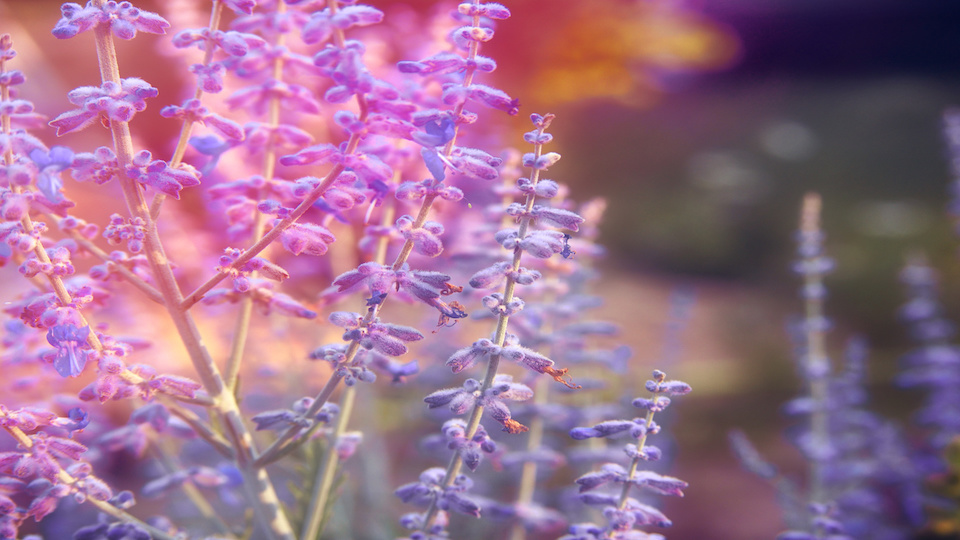The varied climate in plant hardiness zone 6 offers many benefits for gardeners. Winters are cold but not punishing, summers are hot but not scorching, and the growing season is long enough to support a number of gorgeous perennials.
To get you started, we have provided a partial list of beautiful, hardy, low-maintenance perennials suitable for growing in Zone 6.
Coral bells (Heuchera americana): Coral bells thrive in organically rich, well-drained soil. This woodland plant is adaptable to either full sun or partial shade but appreciates a little protection from hot afternoon sun. Regular irrigation is essential, especially in hot, dry weather. Some gardeners remove the flowers so the spiky blooms don’t detract from the unique, colorful leaves, which are available in shades of lime green, purple, rose, gold, and various variegations.
Coreopsis (Coreopsis spp.): Native to the prairies and woodlands of North America, coreopsis is a rugged, drought-tolerant plant that produces masses of sunny, daisy-like flowers in a rainbow of colors from early summer to fall. Also known as tickseed, coreopsis likes hot weather and doesn’t require much water to look its best. In fact, it thrives in shallow rocky or sandy soil. Butterflies and bees are extremely fond of this hardy bloomer.
Lungwort (Pulmonaria): The unfortunate nickname of this sturdy little woodland plant belies its beauty and usefulness, as lungwort provides bright blue, white, or pink flowers before most perennials make an appearance in early spring. This low-growing, mounding perennial, also known as spotted dog or Jerusalem cowslip, is a nice choice as a groundcover in a shady location, although it tends to spread fairly slowly. Soil should be slightly moist for best results.
Anise hyssop (Agastache foeniculum): Spiky lavender-purple blooms adorn this low-maintenance plant from early summer to autumn. Anise hyssop is easy to get along with and is happy in nearly any well-drained soil and either full sun or partial shade. Regular irrigation is helpful for young plants, but anise hyssop is drought tolerant once established. As an added bonus, you can use the fragrant leaves in jelly or herbal tea, or dry them for homemade potpourri.
Russian sage (Perovskia atriplicifolia): Russian sage produces clusters of airy, bluish-lavender flowers from mid-summer into fall, and the aromatic silvery foliage is nearly as lovely as the blooms. Full sunlight and excellent drainage are critical. Water Russian sage regularly to develop healthy roots during the first growing season; thereafter, occasional irrigation during hot, dry weather is sufficient.
Globe thistle (Echinops bannaticus): When it comes to low-maintenance plants, it doesn’t get much easier than globe thistle. This plant is appropriately named for the round, icy white to intense blue, golf-ball-size blooms that appear at the top of tall stems in midsummer. Globe thistle thrives in full sunlight and average, well-drained soil. Although the stalks are sturdy, taller varieties benefit from staking to keep them upright throughout the season. Globe thistle tends to self-seed generously, so be sure to deadhead wilted blooms if you want to minimize spread.
Catmint (Nepeta cataria): Catmint is a perennial herb that produces clusters of purple-spotted, white flowers from late spring until fall, especially if you give it an occasional haircut. Sometimes known as dwarf catnip, this plant attracts beneficial insects and hummingbirds to your garden (and your cat will love it). Catmint thrives on neglect and performs best in dry, rocky or sandy soil. Full sun is best, but a little light shade won’t slow it down.
Hellebore (Helleborus orientalis): Also known as Lenten rose or Christmas rose, hellebore is a unique plant that, in zone 6, produces cup-shaped, white, pink, or rosy purple blooms in late winter or early spring. This well-behaved plant grows in nearly any soil as long as it isn’t waterlogged or bone dry. Light shade is best, and intense sunlight can scorch the plant. Similarly, harsh winter winds can cause the plant to look worn out and bedraggled, so locate it in a protected area of your garden.
-Mary Helen Dyer




